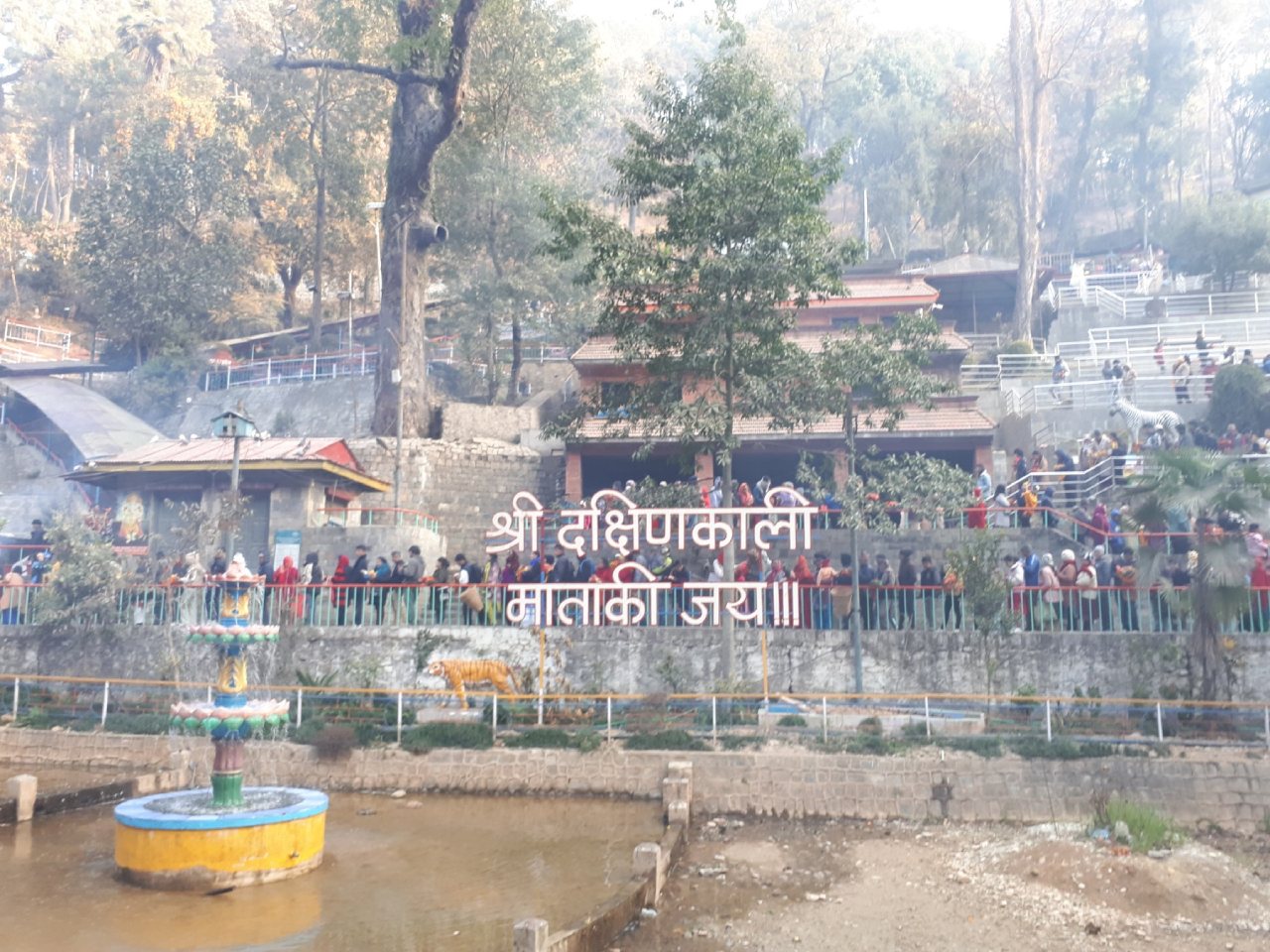Dakshinkali temple is located in Dakshinkali Municipality ward no. 6, Kathmandu, Nepal. Dakshinkali is one of the most important Hindu goddesses and Shakti Peeths in Kathmandu is dedicated to the six-armed goddess Kali. Dakshin in the Nepali language means south direction. This shrine is situated in the south cardinal point of Kathmandu valley. It is approximately 18-20 km south of Kathmandu Valley. This temple was established by King Pratap Malla of Kathmandu.
The temple is tantric in nature and is believed as a wish-fulfilling goddess. There are idols of the Ganesh, Goddess of Sapta Matrika (Seven Divine Mothers) such as Naarsinghi, Baraahi, Kumari, Indrayani, Vaishnavi, Maheshwari, and Braahmi at the right side of the Goddess Dakshinkali. The idol of Bhairav is at the front. Especially on Tuesdays and Saturdays, there are a lot of crowds offering their prayers and animal sacrifices (chickens, ducks, goats). It can be even more crowded on special days.
People offer animals in front of the Kali idol but these days offerings are done at the behind of the idol. The area is covered with green forest and there are facilities for toilets and parking. On the way to the temple, there are stalls selling flowers and other puja materials.
Dakshinkali temple history
In a dream, Goddess Dakshinkali told King Pratap Malla that she is sitting on a rock on the Nagaracho hill above Pharping and advised to set up the idol of the Goddess. The king did not pay much attention to his dream, so the Goddess Dakshinkali appeared in one of the palace girls’ bodies and told about the place where the Goddess was staying.
Later, King Pratap Malla worshiped at the site with the help of Tantric Guru Lambkarna Bhatta, and the sila was carried to the place where Dakshinkali temple is today. It is situated at the meeting place of two holy rivulets named Poornabati and Udhdarbati. It is believed that the idol of the Goddess was made from 1698 to 1731 Bikram Era during the rule of King Pratap Malla. During those days when there were no buses and cars the devotees used to go on foot.

Temple Architecture
The main entrance of the temple is protected by brass fencing. There are little brass lamps fixed on it. Two carved brass lions are guarding the entrance of this fencing.
Festivals
During Dasain a special fair is held. In Navratri, many devotees sacrifice ducks, chickens, and goats.
Mother of the Goddess Dakshinkali
There is a temple of the mother of the Goddess Dakshinkali located at the southwest corner of the hill above the temple of Goddess Dakshinkali. One can view the beautiful view from this temple.
Jhankeshwori
One of the best stone-carved Jhankeshwori is located at Pharping.
Goddess Bajrayogini
The pagoda-style Bajrayogini temple is located in Dakshinkali Municipality ward no. 5.
Picnic spot
Dakshinkali is not only a famous pilgrimage of Nepal but also a popular picnic spot. There are scenic spots in Dakshinkali picnic spot.
How to reach Dakshinkali Temple?
One can get buses, micro-buses, and taxis from Purano bus park in Ratnapark or also from Balkhu. It will take around 45 minutes.
Conclusion,
Overall, Dakshinkali Temple is not only a place of worship but also a symbol of the deep-rooted religious traditions and beliefs of the Nepalese people. Hindus from different countries like Nepal and India come and worship in this temple.

